Dealing with apartment water damage can be a complex and challenging process, requiring a clear understanding of both tenant and landlord responsibilities. This guide delves into the intricacies of navigating water damage in apartment settings, offering essential insights into the rights and obligations of all parties involved. We’ll explore effective preventive measures, outline immediate actions to mitigate damage and discuss the legal and insurance implications. Whether you’re a tenant facing water damage or a landlord seeking to manage such incidents responsibly, this article provides the comprehensive information you need to handle these situations effectively.
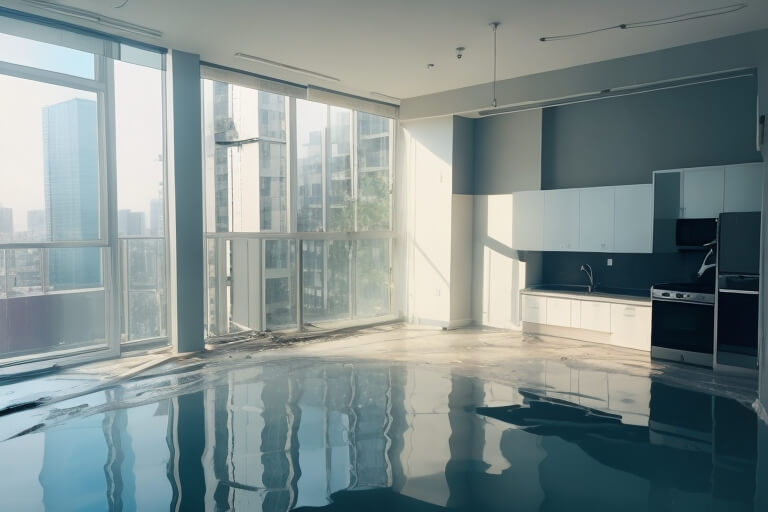
Apartment Water Damage – Landlords and Tenants Responsibilities
Who Pays?
Landlords are typically responsible for maintaining the property’s structural integrity, including plumbing and roofing. The liability often depends on the cause and extent of the damage. Tenants, on the other hand, are expected to promptly report any issues that could potentially lead to water damage.
Tenant responsibilities for water damage
In the context of water damage in apartments, tenants play a crucial role in both prevention and response. It is the tenant’s responsibility to report any signs of potential water damage, such as leaks or dampness, to the landlord promptly. Tenants should also take care not to cause water damage through negligence or improper use of the property, like leaving taps running or causing blockages.
In the aftermath of water damage, cooperation with the landlord in the cleanup and restoration process is essential. This includes allowing access for repairs and following guidelines for maintaining a safe and dry environment. Understanding these responsibilities can help tenants effectively navigate the challenges of water damage in their living spaces.
Steps to Handle Water Damage in Apartments
The immediate aftermath is crucial and requires a systematic approach to mitigate the damage, safeguard your belongings, and ensure your safety.
- Identify the Source:
Immediately identify the source of the water damage if possible, and take steps to stop or minimize the water flow.
- Document the Damage:
Take clear photos or videos to document the extent of the water damage. Capture different angles to provide a comprehensive view of the affected areas.
- Notify the Landlord:
Contact your landlord or property management immediately to inform them of the damage. Share the documented photos or videos as evidence.
- Review Your Lease Agreement:
Go through your lease agreement to understand the responsibilities outlined for both tenant and landlord regarding repairs and damages.
- Contact Your Renters Insurance:
In the wake of water damage, it’s essential to evaluate your insurance options carefully. Before reaching out to your own water damage insurance provider, consider discussing the incident with your landlord. Understand the extent of the coverage provided by the homeowner’s insurance to assess if it can address the damages incurred.
If the homeowner’s insurance doesn’t cover the specific type of damage, or if you seek a more immediate resolution, then turning to your own renters insurance can be a viable option.
- Hire Professional Restoration Services (if needed):
In cases of extensive damage, especially involving water damage in apartment ceilings or walls, consider hiring a professional Restoration Company to ensure effective repair and restoration.
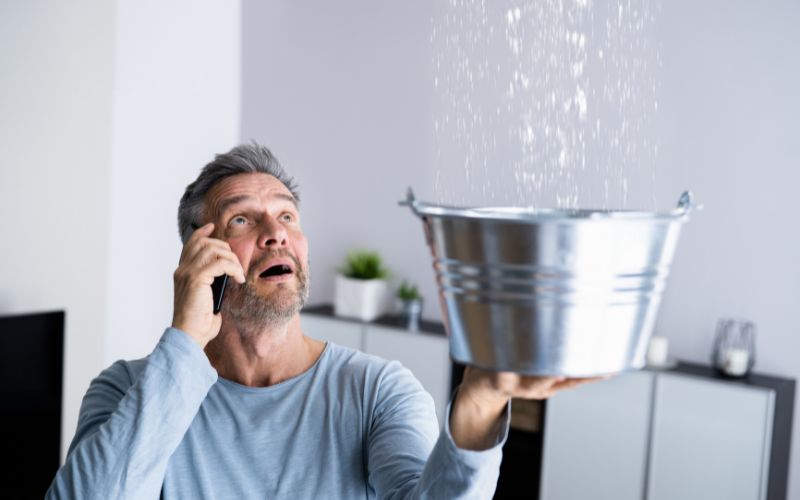
Causes and Types of Water Damage in Apartments
Water damage in apartments is not just an inconvenience but can also pose significant health and safety risks. The aftermath, such as water damage in apartment mold, can turn a cozy living space into an uninhabitable environment if not addressed promptly and effectively. The causes of water damage are varied and can be attributed to both internal and external factors.
Internal Causes of Water Damage
Appliance Malfunctions:
Appliances like washing machines, dishwashers, and refrigerators are integral parts of modern apartments. However, they can also be sources of water damage. Leaks, overflows, or malfunctions can lead to water spillage, affecting floors, walls, and other adjacent areas.
Plumbing Issues:
Pipes and plumbing fixtures hidden behind walls and under floors are often out of sight, out of mind. However, leaks, bursts, and blockages can lead to significant water damage. Regular maintenance and inspections are essential to identify and address potential issues early.
Human Errors:
Simple oversights like leaving a tap open, improper use of appliances, or neglecting minor leaks can escalate into significant water damage. Awareness and prompt action are crucial to mitigate the effects.
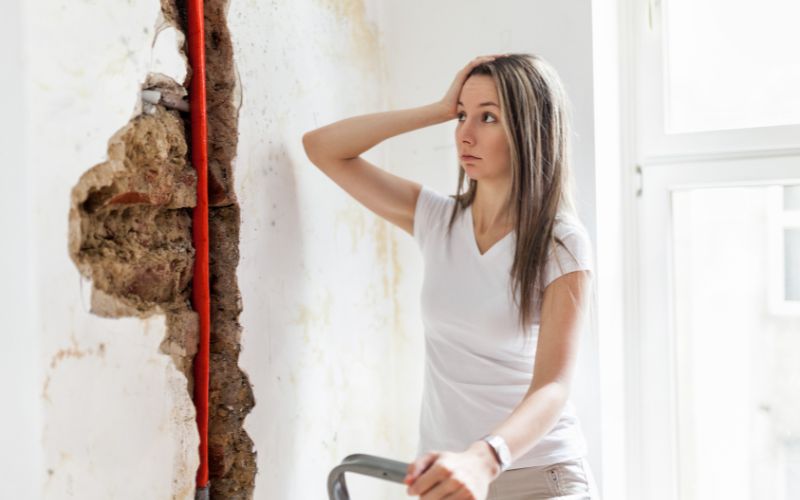
External Causes of Water Damage
Natural Disasters:
Weather-related events like storms, hurricanes, and floods are uncontrollable and can lead to severe water intrusion in apartments. Being prepared and having a response plan can help minimize the damage.
Structural Issues:
The building’s structural integrity plays a pivotal role in preventing water damage. Leaky roofs, poor drainage systems, and inadequate waterproofing can lead to water seepage, especially during heavy rains.
The Aftermath: Mold and Structural Damage
The aftermath of water intrusion, especially water damage in apartment mold, requires immediate attention. Mold thrives in moist environments and can quickly spread, posing health risks and deteriorating the air quality. Structural elements like walls, ceilings, and floors can also suffer damage, leading to safety concerns and expensive repairs.
Water Damage Prevention
Prevention is always better than cure. Regular maintenance checks and immediate repairs of issues like leaky pipes or roofs can significantly reduce the risk of water damage. Tenants should also be vigilant and report any minor issues before they escalate.
Insurance Considerations for Water Damage in Apartments
Understanding the coverage of your renter’s insurance is pivotal. While it typically covers the tenant’s damaged belongings, the structural repairs are often the landlord’s responsibility. Always review your policy to understand the extent of coverage and the process of claim filing.
Professional Help for Water Damage Restoration
In cases of significant water damage, hiring a professional Restoration Company is advisable. They are equipped with the skills and tools to effectively address and repair the damage, ensuring the apartment is restored to a safe and livable condition.
Conclusion
Navigating through the challenges of water damage in apartments requires a collaborative effort between the tenant and landlord. Being informed about your rights, responsibilities, and available solutions is key to handling such situations effectively and efficiently. For professional assistance and consultation on water damage restoration, connect with our expert in Restoration Operators. Your safety and comfort in your apartment are a priority, and timely, effective actions are paramount in ensuring that water damage is addressed appropriately.
Note: This article is a comprehensive guide, but specific situations may require tailored solutions considering the unique circumstances and extent of water damage encountered. Always seek professional advice and assistance when needed.



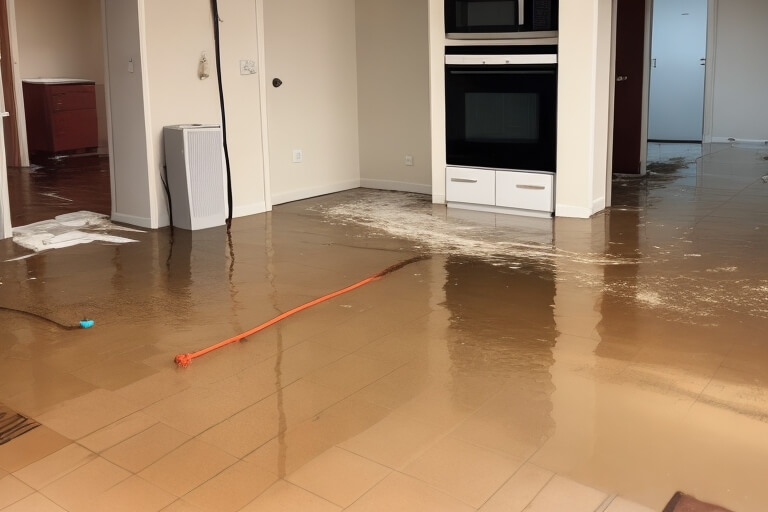
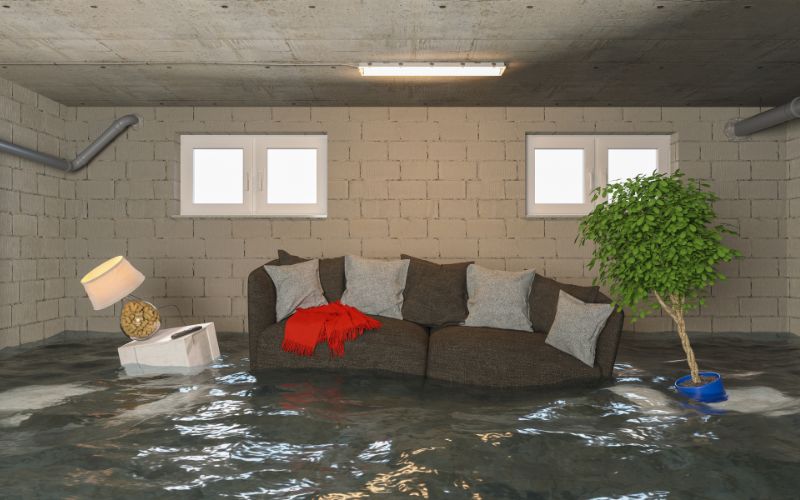
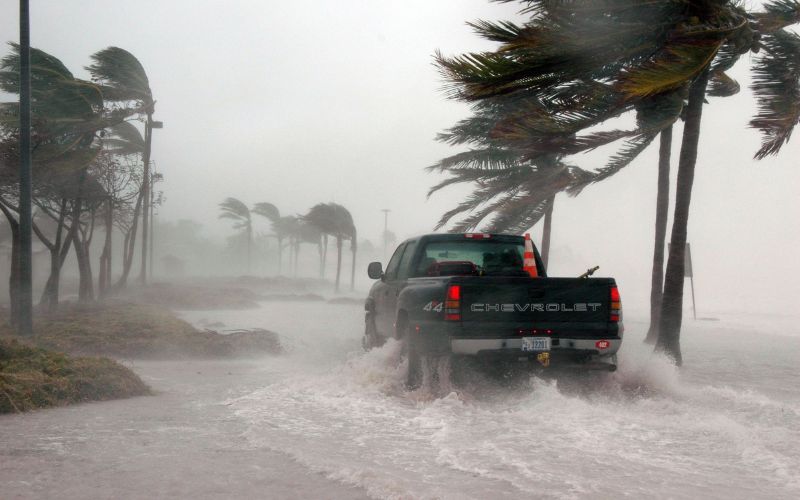
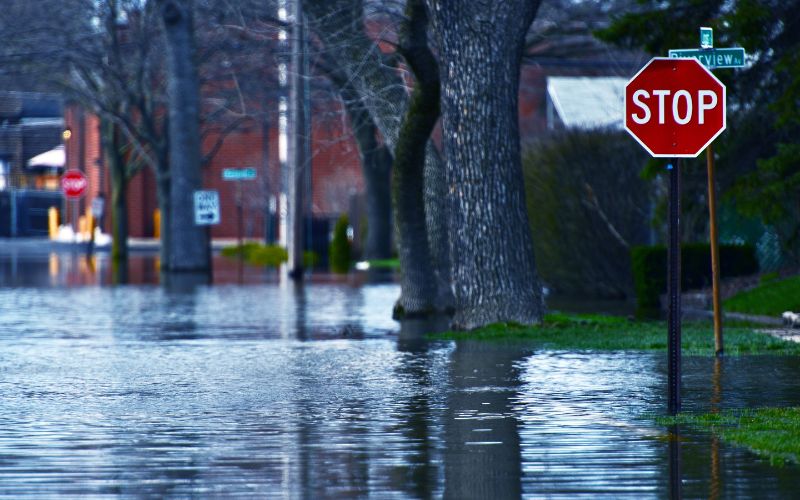
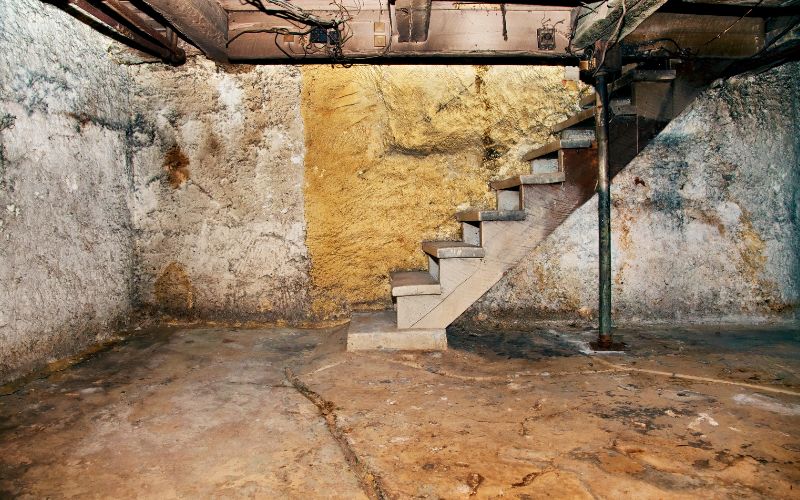
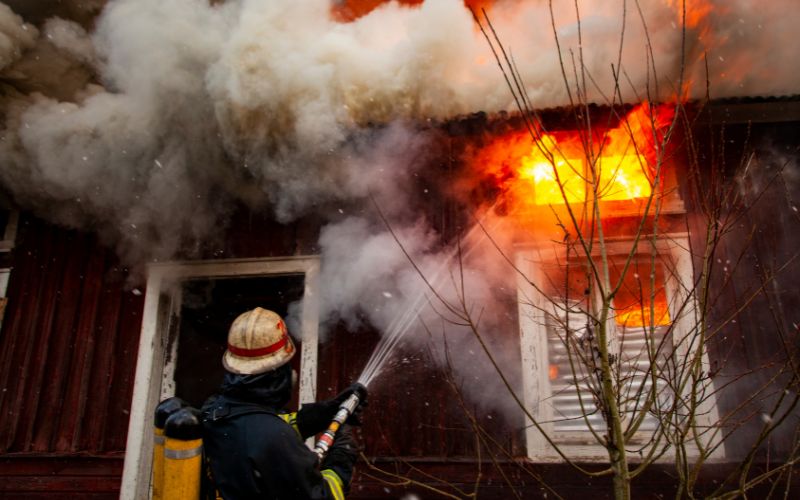




 by
by